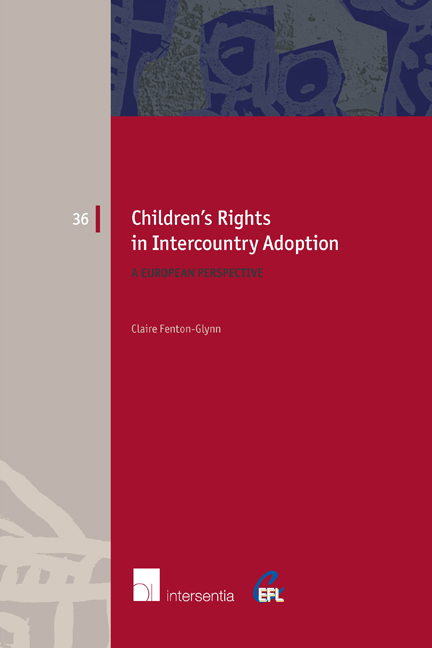
- Publisher:
- Intersentia
- Online publication date:
- November 2017
- Print publication year:
- 2014
- Online ISBN:
- 9781780684925
- Series:
- European Family Law
- Subjects:
- Law, Family Law
Last updated 10th July 2024: Online ordering is currently unavailable due to technical issues. We apologise for any delays responding to customers while we resolve this. For further updates please visit our website https://www.cambridge.org/news-and-insights/technical-incident


Inner Temple New Author's Prize 2015 Winner of the Cambridge Law Faculty's Yorke Prize 2015Cited by the Court of Appeal in N (Children) (Adoption: Jurisdiction) [2014] EWFC 45European jurisdictions play a central role in intercountry adoption, both as countries of origin for children being placed, and as receiving countries. In 2010, 50 per cent of all children involved in intercountry adoption worldwide were sent to countries within Europe, while three European states - France, Spain and Italy - have been in the top five receiving states in the world for the past 15 years. In addition, of the approximately 30,000 children involved in intercountry adoption per year worldwide, around one-third come from European jurisdictions. The question that this book aims to answer is very simple: how can we best protect the rights of these children? Using the United Nations Convention on the Rights of the Child and the Hague Convention on Protection of Children and Co-operation in Respect of Intercountry Adoption as the foundation for analysis, this book provides an examination of the application of children's rights in the field of intercountry adoption. It uses European jurisdictions as examples of both good and bad practice in order to illustrate the issues that arise in the practical implementation of these principles. In doing so, the book proposes normative guidelines within which intercountry adoption can be effected in a manner that protects the rights of children in Europe.This book argues that children involved in intercountry adoption should be afforded the same safeguards, the same protection, as children in domestic placements, in a system that focuses on the welfare of the child as the paramount consideration.The book covers in detail the following issues:- the place of intercountry adoption within the domestic system- the applicability of intercountry adoption as a child protection mechanism, and the impact it can have on other forms of alternative care- the conditions for parental consent to intercountry adoption; including the identity of those who must give consent, and how it can be dispensed with- the mechanisms used to prevent consent being obtained improperly, and to prevent the illegal trafficking of children- the participation of the adopted child in the decision-making process- the right of the child to obtain information concerning his or her biological parents- the eligibility of prospective adopters- the support necessary for a successful adoptive placementAbout this book': [The book] takes a high-level view at how international adoption works and its consequences. [...] This book should be compulsory reading for anyone involved in the creation of, of lobbying for, or research into, adoption law. But that is not to say it has no value to the practitioner. The book is filled with interesting insights into how adoption is practiced throughout the EU, as well as Russia, Ukraine and the US.' Ruth Cabeza in [2015] 2 International Family Law
 Loading metrics...
Loading metrics...
* Views captured on Cambridge Core between #date#. This data will be updated every 24 hours.
Usage data cannot currently be displayed.